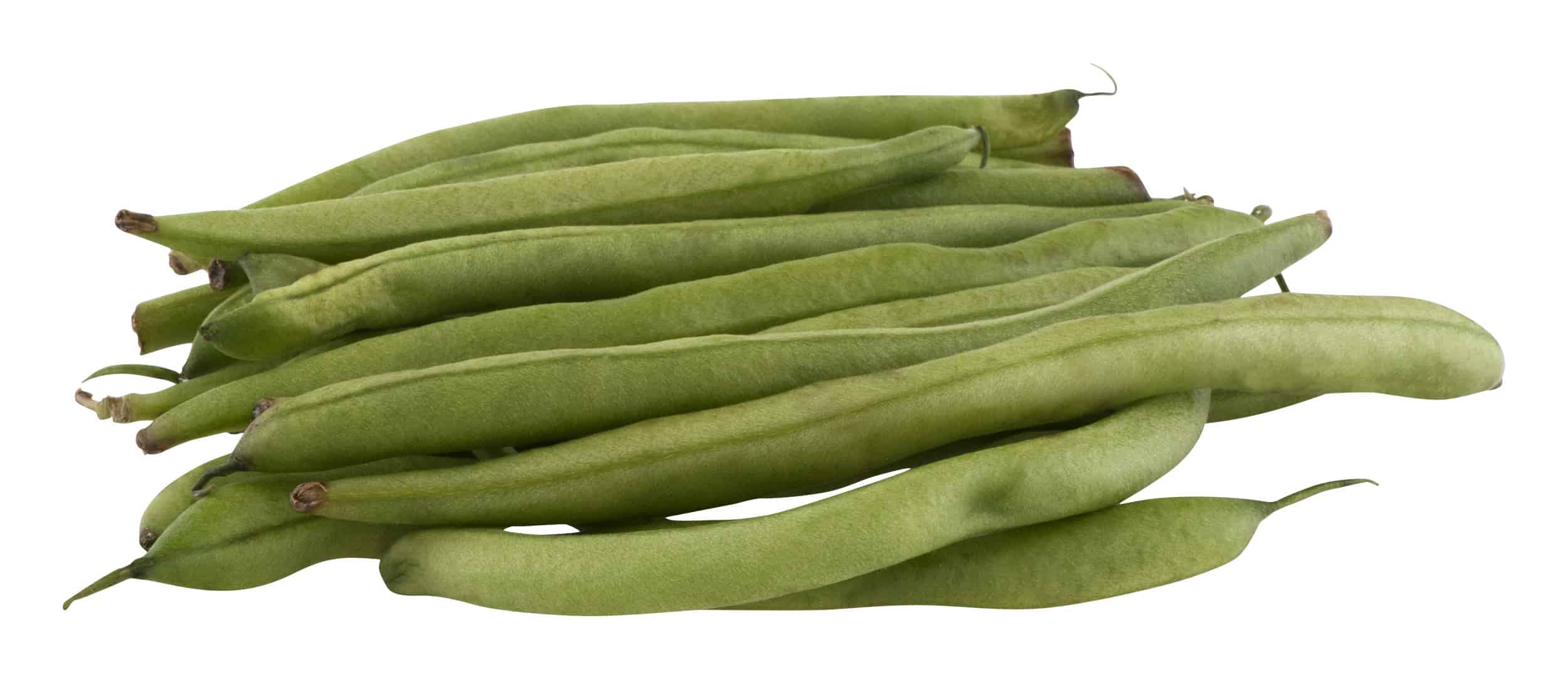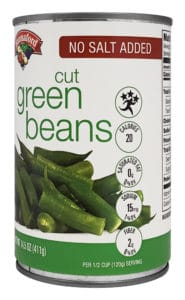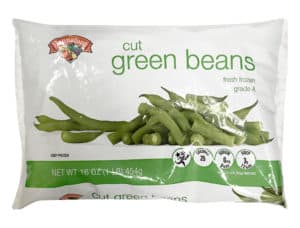I’ve led my fair share of healthy shopping tours. While walking through the aisles of the supermarket, I explain the Guiding Stars program and how looking for foods that earn 1, 2, or 3 Guiding Stars helps you quickly identify the most nutritious foods. Guiding Stars gives foods point for nutrients we should eat more of, which include vitamins, minerals, fiber, whole grains, and omega-3s. It takes points away for nutrients we should limit in our diets, which include saturated fats, trans fats, sodium, added sugar, and artificial colors.
One of my favorite things to point out is that you can find the best nutritional value in fresh, canned, and frozen produce. I select an obviously nutritious product like fresh green beans then show canned and frozen versions in the store that also earn our best score: 3 Guiding Stars. If a tour group is focused on eating better on a budget, I’ll note the varying unit prices among the three forms. Through this exercise, I discuss some key factors to consider when deciding between fresh, canned, and frozen vegetables. I also want to share those here, in our latest edition of Surprising Stars.
Fresh

Fresh is best, right? The short answer is: not for everyone. Before buying exclusively fresh, you should consider factors like price, seasonality, and waste. Nothing beats the flavor of fresh, seasonal produce. I dream of fresh, homegrown tomatoes in the heart of winter. But, as my colleague, Guiding Stars RD Allison Stowell, likes to say, “It’s only nutritious if you eat it.”
If purchasing fresh vegetables stretches your budget too far, or if you waste more due to spoilage, then you should consider supplementing with canned and frozen options. I like to suggest shopping for fresh vegetables that are on sale and in season to get the best bang for your buck.
Canned

For those of us that live in areas with four seasons and a shortened growing season, canned vegetables are especially valuable. In this form, you can purchase vegetables at a reasonable price all year long. These vegetables are usually picked at peak freshness and canned within a few hours. They can be just as nutritious as fresh and frozen varieties because canning preserves many nutrients. They have a shelf life of one to five years and this convenient form can save you time soaking dried beans or peeling and chopping fresh vegetables.
Choose canned vegetables without added salt. Look for cans with just the vegetable and water in their ingredients list. If “no salt added” options are not available in your store, choose “low sodium.” Guiding Stars takes points away from foods for added sodium, so looking for canned vegetables that earn 2-3 Guiding Stars is a good way to quickly choose the most nutritious products.
Frozen

In most cases, frozen vegetables are flash frozen immediately after harvesting. This preserves nutrients, making them as nutritious as their fresh counterpart. Frozen vegetables are cleaned, chopped, and ready to use in your favorite dish. They are nearly identical to the fresh varieties, but often at a better price. Plus, they will last for several months in your freezer, which helps minimize waste.
Look for frozen vegetables with just the vegetables in their ingredients list. For a slightly higher cost, you can buy varieties with packaging that can be steamed in the microwave. Some frozen vegetables are packed in sauces, which can be high in sodium and saturated fats, both of which cause a food to lose points with Guiding Stars, so again, looking for frozen products that earn 2-3 Guiding Stars will help you choose nutrition that’s comparable to fresh produce.
Zero-Star Produce
Now, one reason people sometimes choose canned or frozen products is because they like the taste or texture of those high-sodium green beans that might not earn any Guiding Stars. Are those green beans bad and devoid of all nutrition? No. At Guiding Stars, we believe that no food is inherently bad. Foods that earn no stars, however, are best to enjoy in moderate portions and in balance with plenty of foods that do. If you really love salty canned green beans, for example, consider pairing them with a fish high in omega-3s, like salmon; a whole-grain side, like brown rice; and a second vegetable that is has been prepared with no added salt.